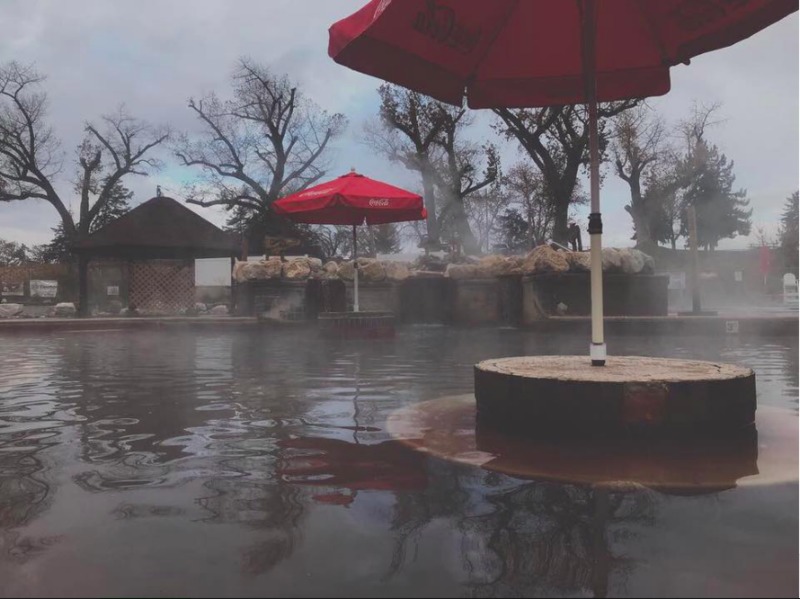Crystal Hot Springs

https://www.facebook.com/crystalhotsprings/photos/a.10151796502391950/10156885135491950/?type=3&theater
For centuries, people have used hot springs in the American West to restore health and well-being. These natural features attracted tourists and continue to be an important economic feature of the West.
Hot springs are a popular destination for wellness tourism, and have been an important part of the American West. Crystal Hot Springs in Honeyville, Utah, is a prime example of how the market has grown around these natural fixtures. The Great Basin Region has been home to several generations of Native Americans, most recently the Shoshone-Bannock tribe. While they inhabited the area, they used the hot springs for relaxation and wellness, just as they are used today. When white settlers came to the area, the hot springs were made a part of an industry, and were used to bring tourism revenue to the town.
Settlers commercialized Crystal Hot Springs as a business in 1901, under the name Madsen Hot Springs. The daily operation has largely stayed the same since then. The springs contained a combination of calcium, chloride, fluoride, iron, lithium, magnesium, manganese, potassium, silver, sodium, strontium, and sulfate. These minerals are thought to improve skin texture and tone, and even relieve illness. The spring is heated naturally from the earth’s core, ranging from 120-134 degrees Fahrenheit. The resort fills its pools from the hot springs using gravity, letting the springs flow into the pools below. The original resort building was a covered pavilion, which was lost in a fire in the 1930s. The pool has remained in the same spot since the opening of the resort.
During World War II, President Franklin Roosevelt’s administration established a rehabilitation program for wounded soldiers. For three years, the federal government sent veterans to Crystal Hot Springs to recover from their injuries. The natural heat helped manage their pain, and the minerals calmed inflammation to provide lasting comfort. These soldiers also suffered from post-traumatic stress disorder, commonly referred to as shell shock. This disorder was recognized by physicians treating war veterans, who recommended a quiet relaxing environment for the soldiers who had recently returned. Crystal Hot Springs was able to provide this, treating these veterans physically and mentally. After the war, the hot springs continued to be prosperous, providing people with a place to relax as more families enjoyed leisure time in the booming post-war economy.
Crystal Hot Springs is still a popular designation, but lately has catered more to Utah families than to tourists. The original large pool is ideal for families, as it gives children space to play, without intruding on other guests. The resort is also affordable, making it a reasonable recreation activity even in a bad economy. While there are certainly still guests who seek the hot springs to relieve pain or relax their bodies, many more visitors are there for fun.
Images

https://www.facebook.com/crystalhotsprings/photos/a.10151796502391950/10156885135491950/?type=3&theater

Crystal Hot Springs. Facebook, March 2, 2018.
https://www.facebook.com/crystalhotsprings/photos/a.10151584299846950/10156163705916950/?type=3&theater

Crystal Hot Springs. Facebook, January 24, 2016.